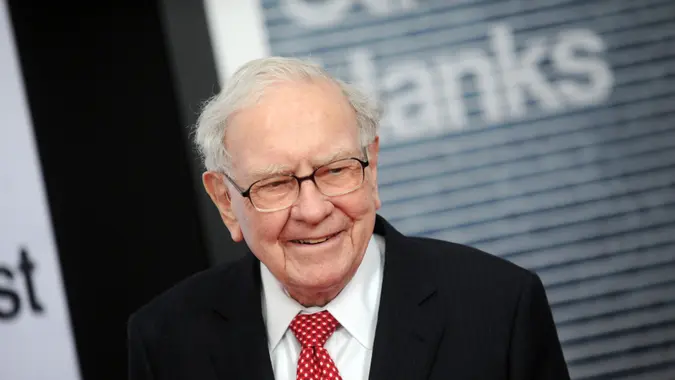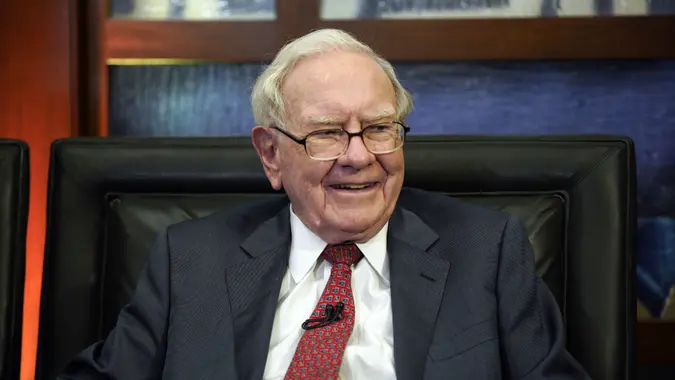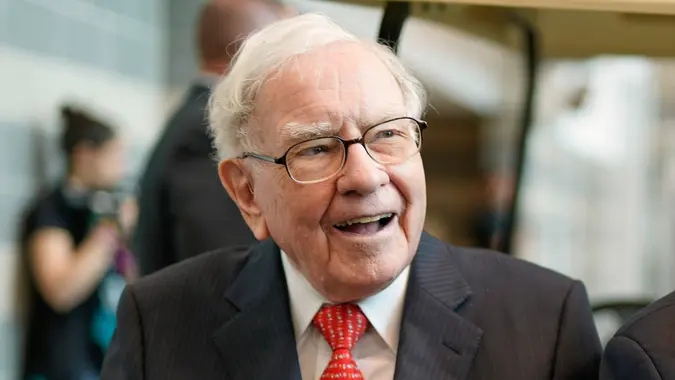JPMorgan Predicts Record Highs for Gold — Should You Invest Now?

Commitment to Our Readers
GOBankingRates' editorial team is committed to bringing you unbiased reviews and information. We use data-driven methodologies to evaluate financial products and services - our reviews and ratings are not influenced by advertisers. You can read more about our editorial guidelines and our products and services review methodology.

20 Years
Helping You Live Richer

Reviewed
by Experts

Trusted by
Millions of Readers
Gold has always been in demand, for both its beauty and its utility. It’s also often used as a diversification tool, or even as a speculative stand-alone investment. But its price is often hard to predict.
As a commodity, the price of gold doesn’t depend on earnings and revenue growth, as is the case with stocks. Rather, a multitude of outside forces, from interest rates to monetary policy to geopolitical events, can drive the price of gold up or down. But it can be hard for the individual investor to factor in all of these components on their own.
To help out, JP Morgan recently came out with a bold prediction for the price of gold over the next 12 to 18 months, based on certain specific factors. Here’s what the famed investment house had to say.
JP Morgan’s Gold Prediction
According to a research note penned by Greg Shearer, executive director of global commodities research, gold will average $2,012 by the middle of next year and hit $2,175 per ounce by the fourth quarter of 2024. This is up from a price of about $1,915 as of Aug. 9, 2023.
If the market price reaches the $2,175 predicted by JP Morgan by Q4 2024, that would represent a gain of about 13.5%.
What Are the Reasons for the Call?
Shearer expects the Federal Reserve to completely reverse its policy of tightening interest rates in the very near future. According to his research note, he expects that the Fed will actually begin cutting rates by Q2 2024, with falling yields being a “significant driver” for gold.
When interest rates drop, demand for gold typically rises. As investment firm PIMCO explains it, when yields are high, gold becomes less attractive because it doesn’t pay any income. But when interest rates fall, so too does the opportunity cost for owning gold.
In other words, owning gold in a low-rate environment does force you to give up the high income you might earn from other investments in a high-yield environment. Thus, money tends to flow back into gold, as JP Morgan predicts for the upcoming 12-to-18 months.
Shearer also notes that there is still the potential for a recession in the coming months. Recessionary environments tend to dampen interest rates even further, which in turn supports the case for owning gold. According to Shearer, the deeper any recession is, the higher gold prices are likely to go.
In addition to the falling-interest-rate scenario, JP Morgan also sees support for gold in the form of institutional demand. According to the firm, central banks will likely continue to buy gold to diversify away from the U.S. dollar — which tends to fall along with interest rates — and to hedge against heightened geopolitical risks.
Should You Invest Now?
Investing in gold is not for everyone.
For starters, it doesn’t cast off any income. Actual gold is also quite illiquid, although you can sidestep this by owning an exchange-traded fund tracking the price of gold instead.
Lastly, gold prices can be notoriously fickle. Unlike stocks, which have actual businesses behind them generating revenue and earnings, gold is the ultimate supply-and-demand commodity. Investors typically use it more as a hedge than as a straight investment, and most financial advisors suggest that even the most bullish investors only devote 10% or less of their portfolios to commodities like gold.
That being said, if you believe in JP Morgan’s analysis, gold might prove a good asset in terms of both diversification and appreciation over the next 12 to 18 months. Most economists believe that the Fed will indeed begin to cut interest rates sometime in 2024, and this forms the backdrop of JP Morgan’s argument.
Of course, many economists also called for a recession in 2023, and thus far, the U.S. economy has proven surprisingly resilient. Falling interest rates might actually help prop up the economy and keep it out of recession, in which case JP Morgan’s argument for gold might be too bullish.
As the future price of gold can’t be determined with any certainty, if you’re considering investing, consult with a financial advisor so you can discuss if gold is something that matches your investment objectives and risk tolerance. Also, consider limiting your gold investment to no more than 10% of your overall portfolio, even if you’re bullish on the precious metal.
More From GOBankingRates
 Written by
Written by  Edited by
Edited by 

























